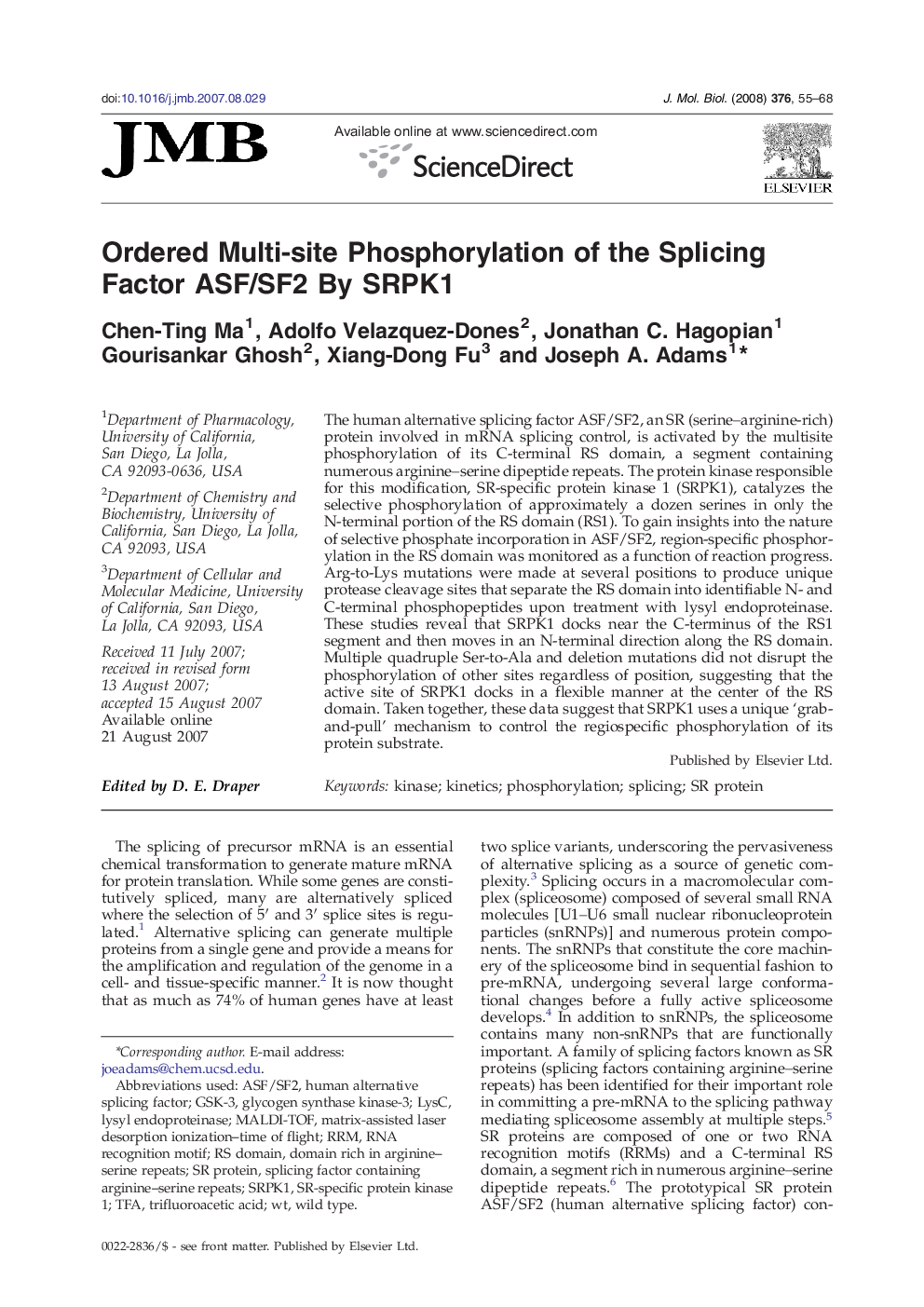| Article ID | Journal | Published Year | Pages | File Type |
|---|---|---|---|---|
| 2187629 | Journal of Molecular Biology | 2008 | 14 Pages |
The human alternative splicing factor ASF/SF2, an SR (serine–arginine-rich) protein involved in mRNA splicing control, is activated by the multisite phosphorylation of its C-terminal RS domain, a segment containing numerous arginine–serine dipeptide repeats. The protein kinase responsible for this modification, SR-specific protein kinase 1 (SRPK1), catalyzes the selective phosphorylation of approximately a dozen serines in only the N-terminal portion of the RS domain (RS1). To gain insights into the nature of selective phosphate incorporation in ASF/SF2, region-specific phosphorylation in the RS domain was monitored as a function of reaction progress. Arg-to-Lys mutations were made at several positions to produce unique protease cleavage sites that separate the RS domain into identifiable N- and C-terminal phosphopeptides upon treatment with lysyl endoproteinase. These studies reveal that SRPK1 docks near the C-terminus of the RS1 segment and then moves in an N-terminal direction along the RS domain. Multiple quadruple Ser-to-Ala and deletion mutations did not disrupt the phosphorylation of other sites regardless of position, suggesting that the active site of SRPK1 docks in a flexible manner at the center of the RS domain. Taken together, these data suggest that SRPK1 uses a unique ‘grab-and-pull’ mechanism to control the regiospecific phosphorylation of its protein substrate.
